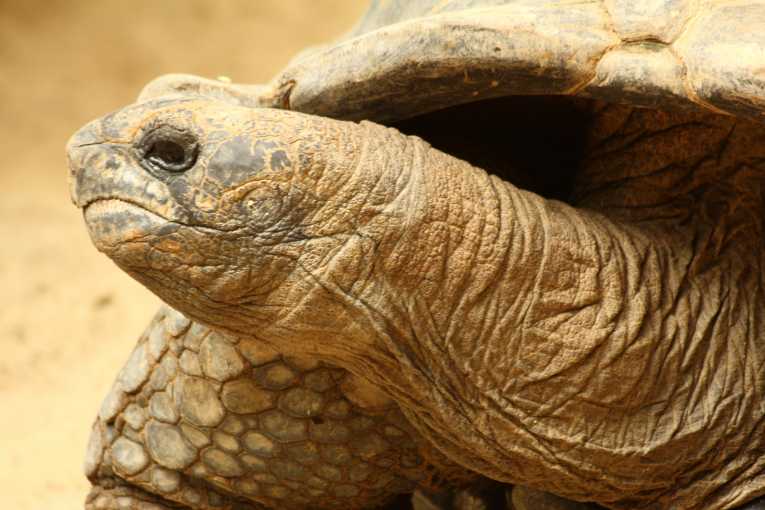Researchers at the University of Bristol's School of Biological Sciences report that aftert ten years, introduced tortoises served as ''effective seed dispersers'' for regrowing an endangered tree species in Mauritius' Ile aux Aigrettes nature reserve.
Beginning in 2000, 18 adult and sub adult Giant Aldabran Tortoises were brought to the island of Ile aux Aigrettes in an effort to save and regrow the island's endangered ebony forest. The tortoises were expected to function in place of the native giant tortoise species that became extinct in the 1800s. That is, they would eat the ebony fruits and then the seeds would be dispersed when they passed them out in their stools.
True enough, the researchers found that most of the ripe fruits that fall from the trees are eaten, and seedlings are growing in places used as toilets by the tortoises.
The ''rewilding'' strategy worked, according to the report, not just because the seeds were spread around successfully, but because the ''process of passing through a tortoise's gut also improved seed germination.''
This is the first report of empirical evidence that rewilding - defined in the study as ''the intentional introduction of exotic species to replace the ecosystem functions of recently extinct species'' - can be a successful ''ecosystem management option'' to ''reverse ecosystem dysfunction following the loss of species interactions.''
Researcher Christine Griffiths noted that ''Reversible rewilding experiments … are necessary to investigate whether extinct interactions can be restored.''
Co-author, Stephen Harris, emphasizes, ''Ecological restoration projects generally involve the plant community, as more often the animal components are extinct. There is, however, increasing evidence that restoration ecologists should be most concerned with the decline of species interactions, rather than species extinctions per se.''
The report was published in the April 21, 2011 issue of Current Biology. The research was undertaken in collaboration with the Mauritian Wildlife Foundation.
Image: Giant Tortoise.










